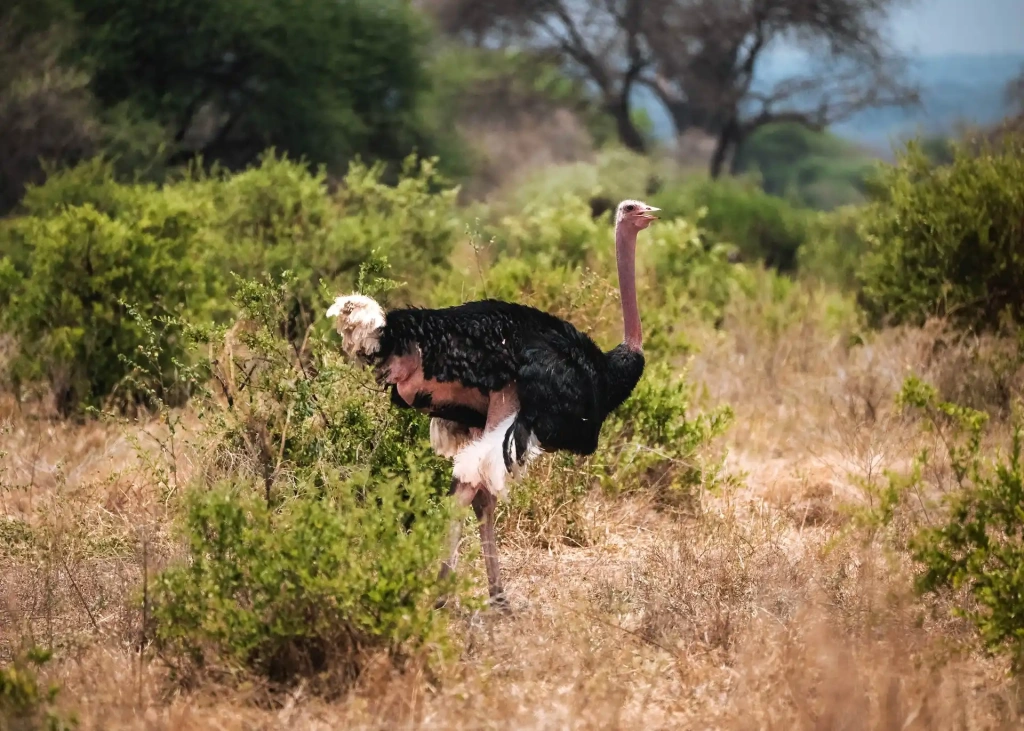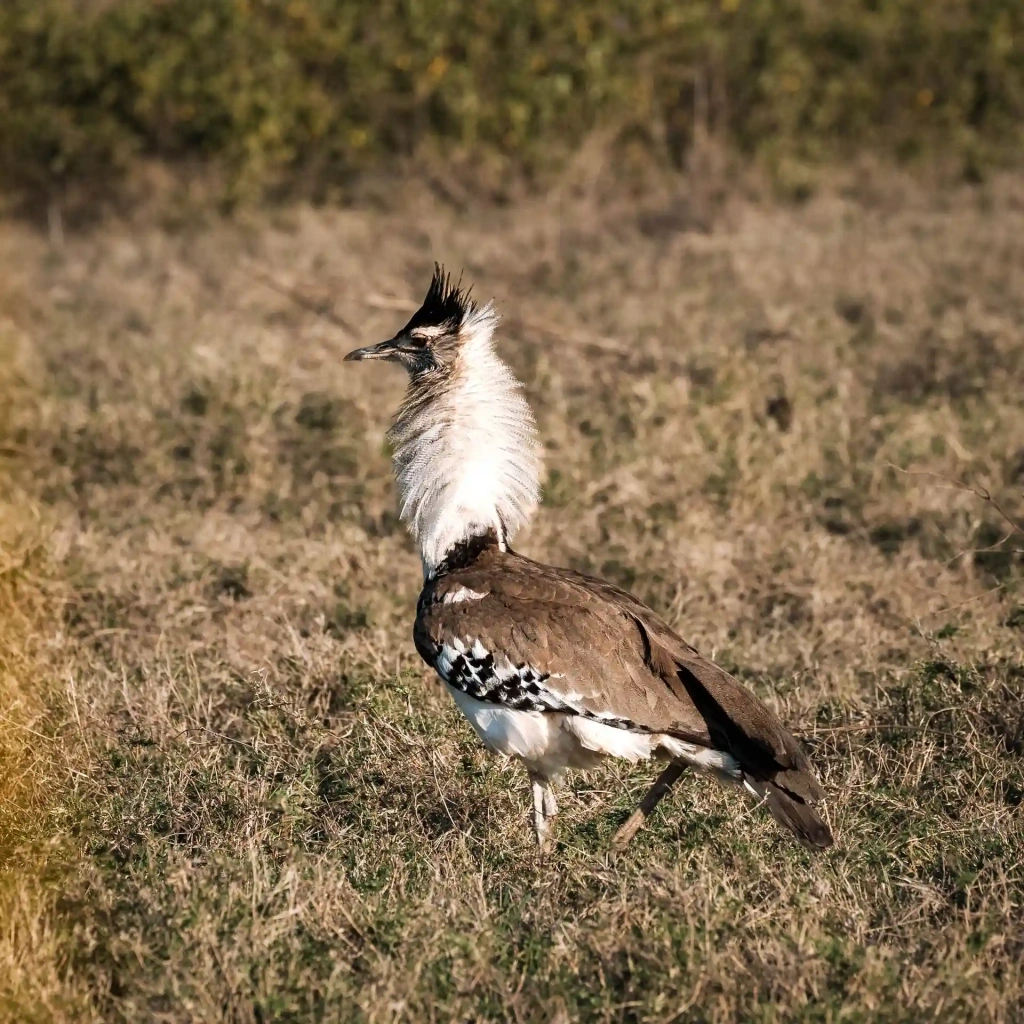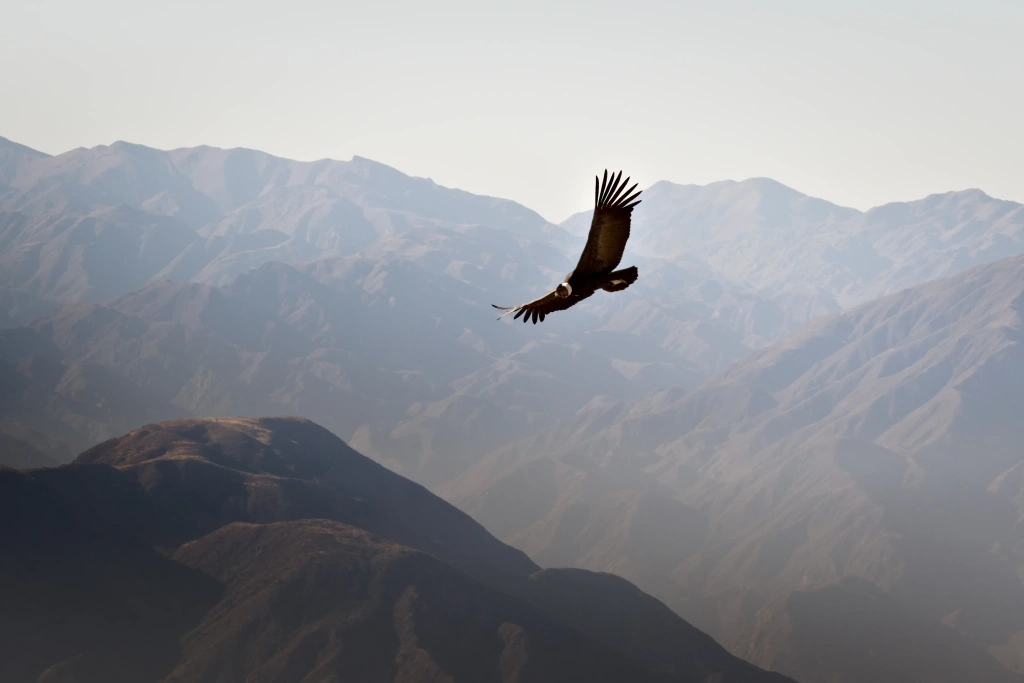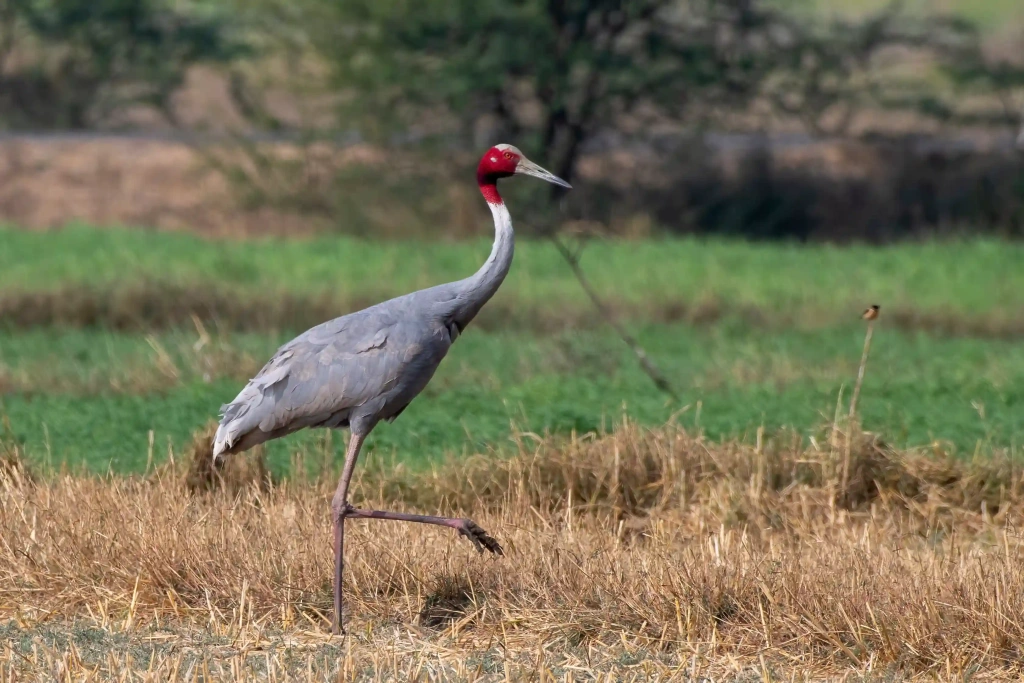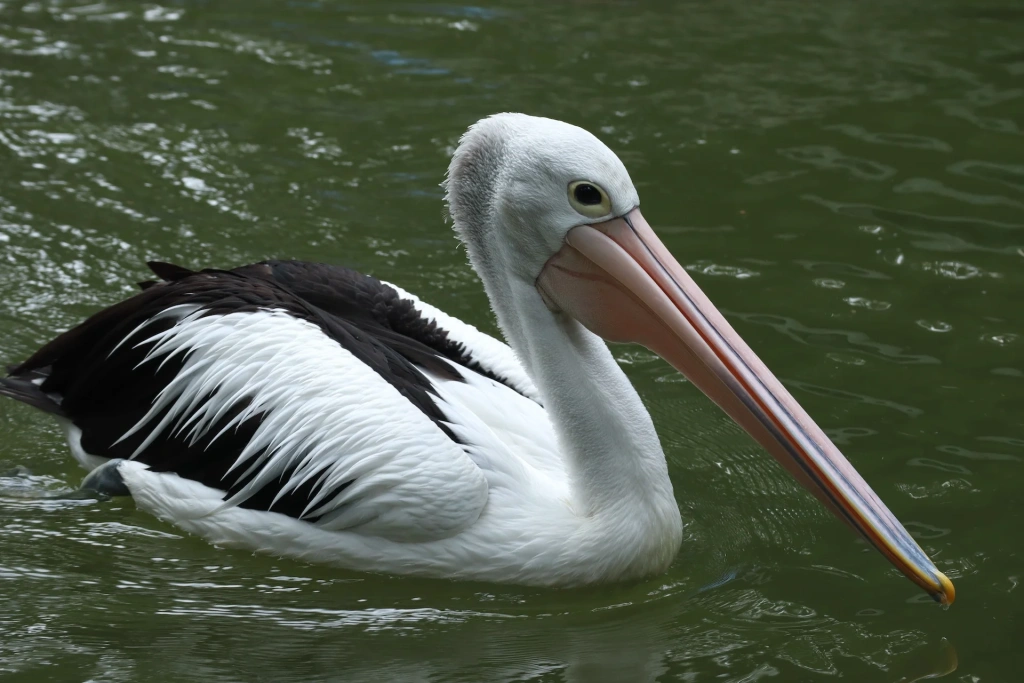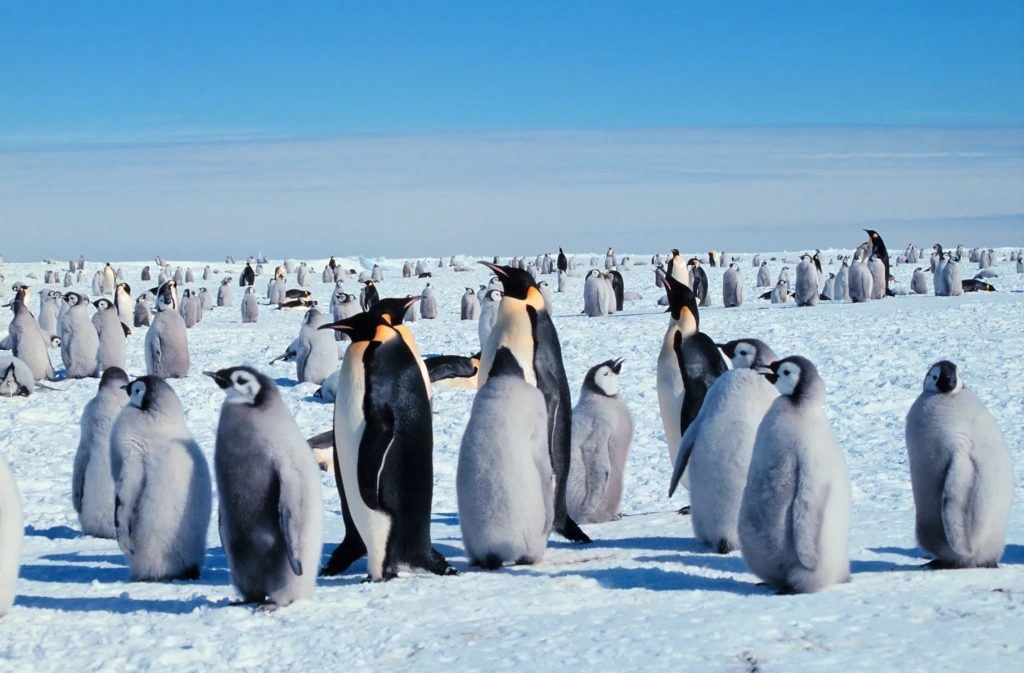Some of the largest birds in the world survive Antarctic temperatures of –60 °C (–76 °F), others glide for thousands of miles over the Southern Ocean without flapping their wings, and some sprint across the African savanna at 70 km/h (43 mph). In this Altezza Travel article, we explore the biggest birds on Earth, their unique traits, and where they live.
1. What is the biggest bird in the world?
The title of the world’s largest bird belongs to the ostrich. Males can grow nearly 3 meters (9.8 feet) tall and weigh up to 150 kg (330 lbs). Despite their size, ostriches can accelerate to 70 km/h (43 mph) and stride up to 4–5 meters (13–16 feet). They can maintain speeds above 60 km/h (37 mph) only for a few minutes, but that’s more than enough to outrun most predators.
Ostriches live in groups with a complex social structure. Several females lay their eggs in a shared nesting pit, while the dominant pair guards the clutch. The incubation period of these big birds lasts about 5-6 weeks, and just a few days after hatching, the chicks can already keep up with the adults.
These birds live only in Africa. In Tanzania, you can see them on safari in Serengeti, Ngorongoro, Tarangire, and several other national parks.
2. The biggest flying bird (by weight): the kori bustard
Male kori bustards can weigh up to 18 kg (40 lbs), making them the heaviest birds capable of flight. They live in the savannas and semi-deserts of Eastern and Southern Africa, preferring open landscapes with sparse vegetation.
Although they can fly, kori bustards spend most of their time on the ground, searching for seeds, insects, lizards, and small rodents. Their camouflaged plumage blends perfectly with dry savanna grasses, and when threatened they often freeze instead of taking off.
During mating season, males inflate their necks, raise their wings, and produce deep booming calls that can carry for several kilometers (a few miles). These courtship displays play a key role in attracting females.
3. The largest bird of prey: the Andean condor
The Andean condor is the world’s largest flying bird of prey. Adults can weigh up to 15 kg (33 lbs), and their wingspan reaches 3.3 meters (10.8 feet). They live in the Andes of South America. Like many large birds, condors rely on soaring flight — flapping consumes too much energy. They prefer windy, mountainous regions where they can easily catch rising air currents and travel hundreds of kilometers (hundreds of miles) in search of food.
Condors are scavengers. Their featherless heads help these big birds stay clean while feeding inside carcasses. They often sunbathe to kill bacteria on their skin.
They reach sexual maturity at about 5–6 years. Their breeding cycle is slow: a female lays only one egg every 1–2 years, and parents care for the chick for nearly a full year. In the wild, condors can live up to 70 years.
4. The tallest flying bird: the sarus crane
The sarus crane is the tallest flying bird in the world — adults reach 1.8 meters (5.9 feet) in height. They are easily recognized by their light grey plumage, pink legs, and red skin on the head. Sarus cranes live in India, Nepal, Cambodia, Myanmar, and Vietnam, inhabiting marshes, flooded meadows, and rice fields. Their diet includes plants, frogs, fish, insects, and reptiles.
Sarus cranes form monogamous pairs for life — a trait shared with many large birds such as storks, albatrosses, swans, and eagles. Their courtship dances are striking: pairs lift their heads, flap their wings, and produce loud, ringing calls. They nest in shallow wetlands with dense vegetation, where the female lays 1–2 eggs and incubates them for about a month.
5. The largest wingspan bird: the wandering albatross
The wandering albatross holds the world record for wingspan — up to 3.5 meters (11.5 feet). It spends most of its life over the open ocean, returning to land mainly to breed. Using dynamic soaring, riding wind currents above the waves, it can cross thousands of kilometers (thousands of miles) almost without flapping. On average, albatrosses spend 6–10 hours a day in the air, and under good conditions can remain airborne for several days with only short breaks.
Chicks hatch with dark brown plumage that gradually lightens. They reach sexual maturity at 9–11 years, when they form lifelong monogamous pairs. The female lays one egg, which both parents incubate for about two months. After hatching, they care for the chick for another nine months.
6. The bird with the longest beak: the Australian pelican
The Australian pelican’s bill measures 34–47 cm (13–18.5 inches). Beneath it is a stretchy throat pouch that holds up to 13 liters (3.4 gallons) of water and works like a net when catching fish. At the tip of the bill is a sharp hook that helps grip slippery prey, clean feathers, and defend against threats — a feature also found in gulls and cormorants.
Australian pelicans inhabit coastal bays, lakes, rivers, estuaries, and marshes throughout most of Australia. They hunt in groups, forming a semicircle to drive fish into shallow water before scooping them up. They nest in colonies: the female lays 1–2 eggs (sometimes 3), incubates them for about a month, and raises the chicks for several months after hatching.
Their wingspan reaches 1.9 meters (6.2 feet). They are not adapted to prolonged flapping flight but are exceptional gliders, capable of staying aloft for up to 24 hours, reaching altitudes of 3000 meters (9,840 feet) and speeds of 56 km/h (35 mph).
7. The largest bird of Antarctica: the emperor penguin
The emperor penguin is the only bird that breeds during the Antarctic winter. It grows up to 120 cm (3.9 feet) tall and weighs up to 45 kg (99 lbs). Dense plumage and a thick layer of blubber protect them at temperatures as low as –60 °C (–76 °F) and in winds up to 150 km/h (93 mph).
Emperor penguins can dive deeper than 500 meters (1,640 feet) and hold their breath for more than 20 minutes — unmatched by any other bird. In 2011, researchers recorded a penguin holding its breath for 27.6 minutes. After resurfacing, it needed six minutes to stand and another 20 minutes to begin walking again. The absolute record was set in 2013 in the Ross Sea: 32.2 minutes.
Their breeding season begins in May. The female lays one egg, passes it to the male, and goes to sea to feed for about two months. During this time, the male keeps the egg warm while fasting and losing up to 45 percent of his body weight. When the chick hatches, the parents switch roles — the returning female takes over care while the exhausted male goes to feed.
Biggest birds ranking
All content on Altezza Travel is created with expert insights and thorough research, in line with our Editorial Policy.
Want to know more about Tanzania adventures?
Get in touch with our team! We've explored all the top destinations across Tanzania. Our Kilimanjaro-based adventure consultants are ready to share tips and help you plan your unforgettable journey.















